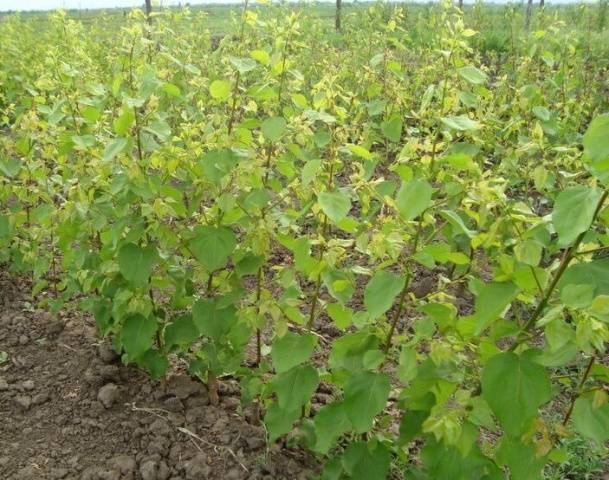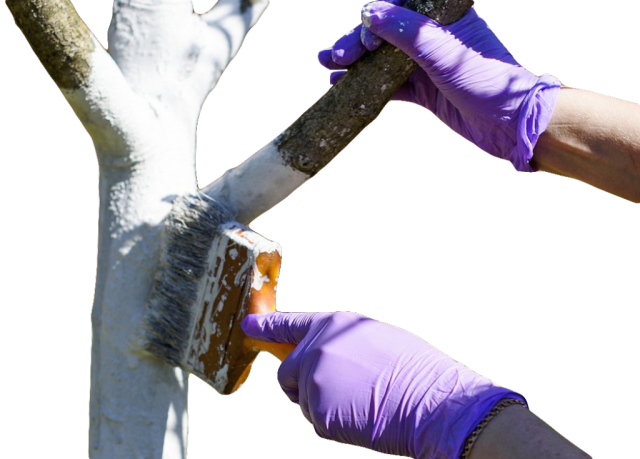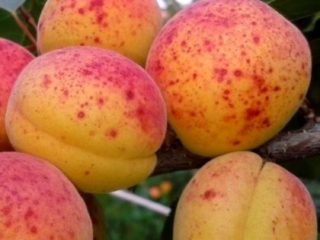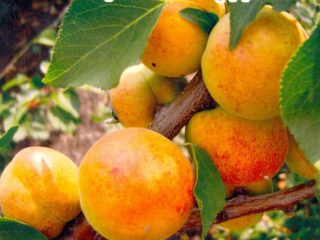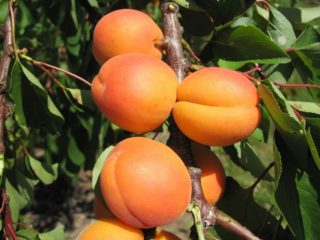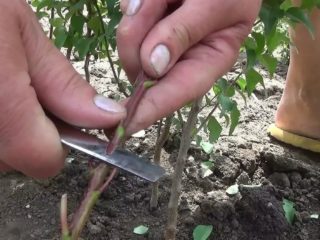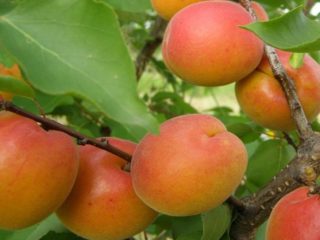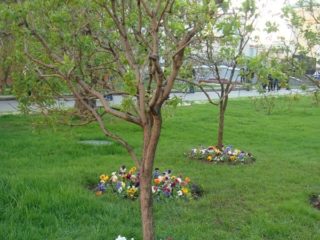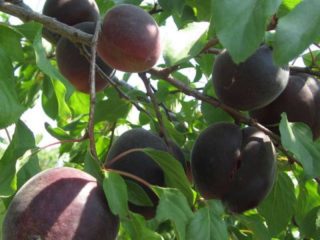Content
Apricot Royal, a description and photo of which is presented in this article, is a perennial fruit tree of the Plum genus of the Pink family. Korolevsky is the only apricot variety that could be grown even in the south of Siberia.
Breeding history
Self-fertile royal apricot is a mid-season variety, bred in Khakassia by specialists from the Institute of Agrarian Problems. There are no exact data on parental forms, experts consider the variety to be a hybrid of French and local frost-resistant cultivars.
Description of culture
Apricot trees of this variety are of considerable size and a well-developed crown. The yield is high, at least 45–50 kg per adult plant. The tree begins to bear fruit at the 4th year of life. Average winter hardiness. Photo of Royal Apricot below.
The variety is susceptible to disease and is often attacked by pests.
Characteristics
The main characteristics of the Royal apricot variety are shown in the table.
Parameter | Value |
Culture type | Fruit tree |
Height | Up to 5 m |
Bark | Reddish brown |
Crown | Wide, rounded |
Leaves | Green, matte, oval with a characteristic protrusion. Length up to 8 cm, width up to 5 cm |
Fruit | Large, oval, velvety to the touch. The color is yellow-orange, with a characteristic blush. On the side there is a pronounced furrow. The average weight of the fetus is 35-45 g |
Pulp | Yellow, juicy |
Taste | Sweet, slightly sour |
Assignment of the variety | Dessert |
Transportability | Weak |
Drought resistance, winter hardiness
Drought resistance of apricot Royal is quite high. Frost resistance reaches minus 20 degrees. There are cases when trees withstood even forty-degree frosts, freezing at the same time, but maintaining their vitality.
Pollination, flowering period and ripening times
Apricot is a completely self-pollinated plant, so it can set as many fruits as there were flowers. But not all of them will ripen, some will crumble soon after fertilization.
Apricot bloom begins earlier than all fruit trees and usually occurs at the end of April. Cold weather can make adjustments. Royal apricot ripens in early August.
Productivity, fruiting
Fruiting of the Royal apricot is annual and abundant. Productivity under good weather conditions and proper care can reach up to 150 kg per tree. In order not to prematurely deplete the plant, it is normalized by cutting off part of the fruit branches.
Scope of the fruit
You can use the royal apricot fruit in any form. They are well suited for making preserves, jams, compotes, and can also be used for home winemaking.
Disease and pest resistance
Apricot Royal has no innate immunity to pests and diseases. To get a good harvest, you need to regularly carry out both preventive and sanitary work to protect trees.
Advantages and disadvantages
In addition to susceptibility to disease, the Royal apricot variety has a number of disadvantages. A fairly tall tree creates problems when harvesting.The fruits are poorly resistant to transportation. Its advantages are its increased frost resistance in comparison with other varieties, high yield and good taste.
Landing features
Planting an apricot should take into account all the nuances associated with this tree. Its life span can reach 30 years. An adult royal apricot is a large and spreading tree, all this also needs to be taken into account.
Recommended timing
The best time to plant an apricot is early spring. The reference point is the air temperature, which should not fall below 0 degrees, either day or night. Spring planting comes with a certain risk:
- too early can freeze the seedling in the event of a return of cold weather;
- the later will lead to a long recovery period.
Choosing the right place
Royal apricots, like other varieties, need light and warmth for normal growth and development. Even a small shade negatively affects the yield, so the planting site should be open and sunny, but without drafts. It is good if on the north or northwest side of the tree there is a wall or fence that protects from the cold wind.
It is desirable that the soil at the planting site of the Royal apricot be light, loamy or chernozem with a neutral or slightly alkaline reaction. Groundwater should not come close to the surface, ideally if the depth of their occurrence is 2–2.5 m.
What crops can and cannot be planted next to an apricot
Apricot does not like being close to other fruit trees and shrubs. It is strongly not recommended to plant next to it:
- cherries;
- cherries;
- apple tree;
- peach;
- pear;
- Walnut.
Selection and preparation of planting material
For planting apricot Royal, you need to choose two-year-old seedlings. Their bark should not be damaged.
Choose seedlings from 1 to 1.5 m in height. The main and side roots should not be dry, broken or less than 20 cm in length.
Landing algorithm
It is better to prepare a planting hole for a Royal apricot seedling in the fall. If it was not possible to do this, then at least two weeks before landing, no later than. Its width should be at least 0.6 m, depth - 0.8 m. At the bottom, it is imperative to lay a drainage layer of 5–7 cm, using crushed stone or broken brick for this. A little closer to the edge, drive a support into the bottom of the pit, a seedling will be tied to it.
The soil removed from the pit must be mixed with humus or rotted manure 2: 1. Add 0.5 kg of complex fertilizer, for example, nitrophoska, and half a bucket of wood ash to the nutrient substrate. If the soil is acidic, neutralize it with lime or dolomite flour.
In the center of the pit, a seedling is placed strictly vertically so that the root collar is 5–6 cm above ground level. The roots are straightened and covered with earth, compacting it in order to prevent the formation of voids. The trunk circle should turn out with a small mound along the edge.
Immediately after planting, the tree is watered with 2-3 buckets of water. The first year you need to moisten the soil regularly.
Follow-up care of the culture
Like any other variety, the Royal Apricot needs good care. Throughout the season, it needs to be cut, fed. Here is a schedule of activities for caring for him:
Spring. Before the buds swell, sanitary pruning is done, removing broken and dry branches. The stem is whitewashed with lime.
Urea is introduced into the near-trunk circle, as well as ammonium nitrate and nitrophosphate (50–70 g each). The tree is treated with drugs against pests, such as "Akarin" or "Iskra Bio". If the spring is dry, regular watering is recommended.
Summer. Formative pruning of green branches is carried out in order to prevent the growth of green mass and thickening of the crown. Watering is recommended in dry weather.If necessary, seasonal pest control is done.
Autumn. Re-sanitary pruning to remove broken branches. At the same time, you need to collect and burn the fallen leaves. The near-trunk circle is dug up, while simultaneously introducing superphosphate, potassium sulfate and wood ash into the soil.
Only young seedlings should be covered for the winter. To do this, their stem is tied with spruce branches and then wrapped in several layers of covering material. At the end of March, such a shelter can be removed.
More about pruning apricot - on the video.
Diseases and pests, methods of control and prevention
Apricot Royal is susceptible to the same diseases as other varieties. The main diseases of these trees are shown in the table.
Disease | What is striking, the symptoms | Methods of control and prevention |
Cytosporosis | The bark of the tree is covered with numerous dark bumps. The shoots gradually dry up, the tree dies. | In the spring, spray with Bordeaux mixture 1%, preparations containing copper. Infected shoots are burned. |
Bacterial necrosis | All parts of the tree are covered with burns, then current ulcers form in their place, the tree dies. | Treatment with Bordeaux liquid 1% or copper sulfate. Infected shoots must be burned. |
Monilial burn | Young shoots become brown and dry out. | Treatment of the crown with Topaz or Strobi preparations. |
Phylosticosis | The leaves turn brown, dry up and fall off. | Treatment with 3% Bordeaux liquid during the period of swelling of the kidneys. |
Clasterosporium disease | Reddish brown spots on leaves and fruits. After 7–12 days, holes appear at the site of the spots. The fruits are deformed. | In autumn and early spring, the tree is sprayed with 3% Bordeaux liquid. Before flowering, the tree is treated with Horus or Mikosan preparations. |
Gum flow | On the bark there is an amber resin. | Cut and burn the gum. Treat the cuts with garden pitch. |
Royal apricots are often infested with pests. The main ones are shown in the table.
Pest | What amazes | Methods of control and prevention |
Aphid | Sucks juice from leaves. | Spraying with folk remedies - a solution of laundry soap, infusion of tobacco, garlic, celandine or insecticides. |
Moth | Caterpillars eat the fruit. | Spraying with Decis or Inta-Vir preparations. |
Leaf roll | Caterpillars eat buds and leaves. | -//- |
Conclusion
Apricot Royal is a good option for a personal plot. With proper care, it is quite capable of satisfying the needs of gardeners. And good reviews about the Royal apricot variety confirm that choosing it for planting is a smart decision.


